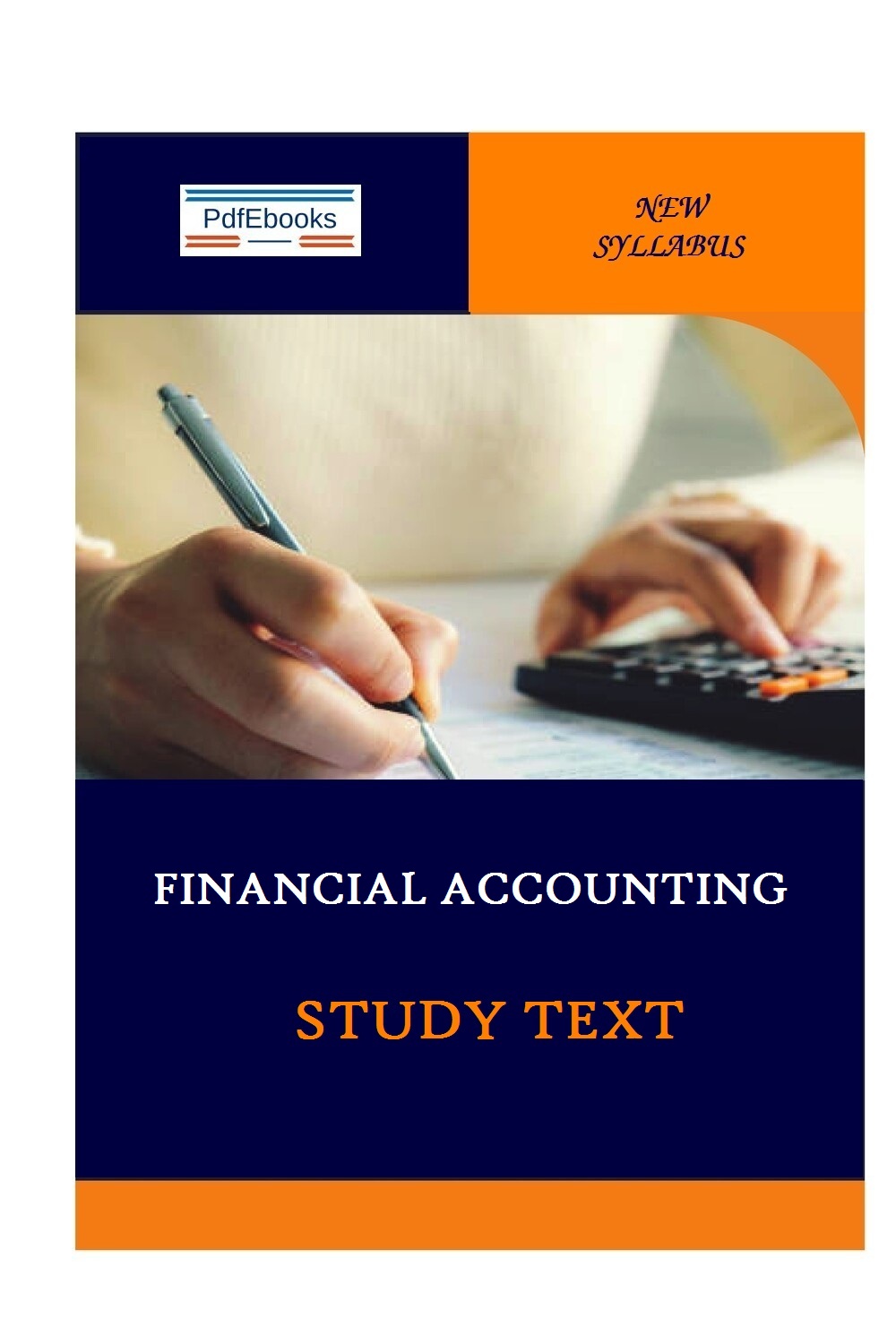
- Introduction to Accounting
- The nature and purpose of accounting
- Objectives of accounting
- Users of accounting information and their respective needs
- The accounting equation
- Reguratory framework of accounting (regulatory bodies such as ICPAK, IFAC, IASB, IPSAB
- Accounting standards (IAS/IFRS), (Importance and limitations)
- Professional ethics
- Accounting concepts/principles
- Qualities of useful accounting information
2 Recording transactions
- Source documents (quotations_ purchases order, statement of account. remittance advice, receipts, petty cash vouchers_ sales arid purchase invoices, credit notes and debit notes, bank statements)
- Books of original entry: sales journal, purchases journal, returns inward, returns outward journal, cashbook, petty cashbook and general journal
- Double entry and the ledger; general ledger, sales ledger, purchases ledger
- The trial balance
- Computerised accounting systems- Role of computers, application and accounting softwares in the accounting process, benefits and challenges of operating computerised accounting systems
- Accounting for assets and liabilities
3.1 Assets
- Property, plant and equipment — recognition, capital and revenue expenditure, measurement (depreciation and revaluation), disposal and disclosures — property, plant and equipment schedule
- Intangible assets — recognition, measurement (amortisation, impairment and revaluation), disposals and disclosures
- Financial assets- examples and risks only
- Inventory – recognition, measurement and valuation using specific. cost method (FIFO and weighted average cost)
- Trade receivables – bad debts and allowance for doubtful debts and receivables control accounts
- Accrued income and prepaid expenses
- Cash at bank — cashbook and bank reconciliation statement
- Cash in hand – cash book and petty cash book
3.2 Liabilities
- Bank overdraft – cash book and bank reconciliation
- Trade payables – payables control accounts
- Loans – accounting treatment of repayment of principal and interest
- Prepaid income and accrued expenses
- Correction of errors and suspense account
- Financial statements of a sole trader
- Income statement
- Statement of financial position
- Financial statements of a partnership
- Partnership agreement
- Introduction to Partnership accounts
- Distinction between current and fixed capital
- Income statement
- Statement of financial position
- Changes in partnership – Admission of a new partner, retirement and change in profit sharing ratio
- Financial statements of a company
- Types of share capital – ordinary shares and preference shares
- Issue of shares (exclude issue by instalment and forfeiture)
- Types of reserves share premium, revaluation reserve, general reserves and retained profits
- Income tax -Accounting treatment and presentation (exclude computation)
- Financial statements – Income statement and statement of financial position
- Published financial statements (describe a complete set of published financial statements but not preparation)
- Financial statements of a manufacturing entity
- Features of a manufacturing entity
- Classification and apportioning costs between manufacturing and selling and administration
- Financial statements – manufacturing account, income statement and statement of financial position
- Accounts from incomplete records
- Features
- Types of incomplete records (Pure single entry, simple single entry, quasi single entry)
- Ascertaining of profit by capital comparison
- Preparation of statement of affairs and profit determination
- Techniques of obtaining complete accounting information
- Financial statements of a not-for-profit organisation
- Distinction between not for profit making organisation and profit making organisation
- Nature of receipts and payments accounts
- Accounting treatment of some special items
- Income and expenditure account
- Statement of financial position
- Analysing financial statements
- Statement of cash flows (categories of cash, methods of preparing statement of cash flows and the importance)
- Financial ratios — definition, categories, analysis and interpretation, application and limitations
- Introduction to public sector Accounting
- Features of public sector entities (as compared to private sector)
- Structure of the public sector (National and county governments: state corporations and other agencies)
- Regulatory structures and oversight [IPSASB, PSASB (establishment, mandate and functions), Director of Accounting Services, National Treasury, Parliamentary Committees. Accounting Officers at national and county levels]
- Objectives of public sector financial statements
- Objectives of IFSAS
- Accounting techniques in public sector (budgeting, cash, accrual: commitment and fund)
(Preparation of financial statements should be excluded)
- Emerging issues and trends
(Visited 521 times, 1 visits today)
